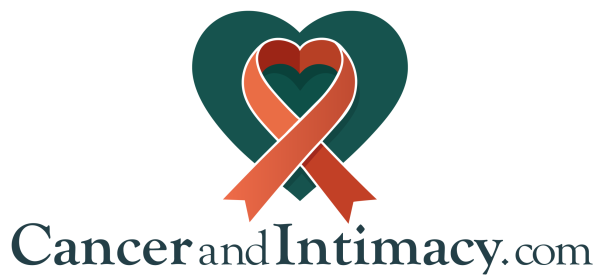Reclaiming Pleasure: 15 Types of Orgasms You Can Explore—Even After (or During!) Cancer
When cancer changes your body, it can also change your relationship with pleasure. Sensation might feel different. Arousal may come slower—or not at all. The ways you once experienced orgasm might feel out of reach. And if you’re navigating loss, grief, scars, or fatigue, even the idea of pleasure can feel far away.
But here’s a quiet, powerful truth:
Pleasure doesn’t have to look the same to still belong to you.
Your body may be different, but it is still capable of profound experiences—including joy, connection, and yes, even orgasm.
This blog is an invitation to explore a wider definition of orgasm—one that goes beyond genitals or goalposts, and instead honors the full spectrum of erotic energy, sensation, and aliveness that can be awakened or rediscovered after cancer.
Here are 15 types of orgasms that may be available to you, no matter where you are in your healing journey.
1. Clitoral Orgasm
The clitoris is an incredibly powerful source of pleasure—though surgery, hormonal changes, or nerve sensitivity may shift how it responds. Using slower touch, lube, warm compresses, or vibrators designed for sensitive skin can help awaken sensation in new ways.
2. Vaginal (G-Spot) Orgasm
Some people find that G-spot stimulation feels muted or uncomfortable after pelvic surgery or radiation. But others discover new kinds of pressure, rhythm, or internal massage that feel grounding and deeply satisfying. Permission to be curious is key.
3. Cervical Orgasm
Deep, often emotional orgasms that come from cervical stimulation can be complex after hysterectomy or pelvic trauma. For some, gentle pressure evokes deep release. For others, it’s no longer available—and that’s okay. The map changes. You don’t lose the right to explore.
4. A-Spot Orgasm
This lesser-known zone is tucked behind the G-spot and may be especially sensitive post-menopause or after certain surgeries. Some people find this area leads to waves of pleasure without triggering discomfort.
5. U-Spot Orgasm
The area around the urethra can be a delicate source of stimulation. If bladder health has been impacted, this may not be accessible—or it may become a new frontier for gentle exploration with lube and patience.
6. Anal Orgasm
Anal touch or play can create deep, full-body orgasms. If rectal surgery or fear around bowel health is present, approach slowly. With trust, safety, and the right tools, this can become a sacred space for pleasure and healing.
7. Prostate Orgasm
For people with prostates, cancer treatment can impact ejaculation or erection—but prostate massage (internally or externally) can still yield rich sensation and orgasmic release, even without climax as you once knew it.
8. Nipple Orgasm
Chemotherapy, hormone therapy, or surgery can make nipple sensation feel different—but not gone. In fact, many people discover that non-genital touch becomes a primary erotic portal. Nipple orgasms are real. And beautiful.
9. Full-Body Orgasm
This type of orgasm feels like waves of energy pulsing through the body. It often comes from slowness, breath, and deep presence—making it especially accessible for people who are healing and moving at a gentler pace.
10. Energy Orgasm
You don’t need friction or climax to feel orgasmic. Breathwork, sound, eye contact, or tantra-inspired practices can move erotic energy through the body—offering release, radiance, and renewal.
11. Mental or Fantasy Orgasm
Sometimes, our minds become our most powerful erogenous zone. Whether touch isn’t possible, or you’re recovering from surgery or fatigue, fantasy can bring rich, imaginative pleasure. Daydreaming counts. So does longing.
12. Sleep/Dream Orgasm
Yes, even during sleep, the body can remember. Nocturnal emissions or erotic dreams can be a source of surprising joy—proof that your erotic self is still alive inside you, whether or not you’ve been touching it.
13. Blended Orgasm
This is a combination of multiple pleasure zones—clitoral and G-spot, or prostate and nipple, or breath and emotion. After cancer, these blended states may feel gentler, less explosive—and still deeply satisfying.
14. Squirting Orgasm
While not everyone experiences squirting, some do—especially with internal stimulation. After pelvic surgery, it may feel harder to access. But if you’re curious, there are ways to approach it slowly, with breath and pelvic awareness.
15. Heart or Emotional Orgasm
This may sound poetic, but it’s real: some people describe orgasm as a release of emotion through the chest or heart. After cancer, this kind of orgasmic experience can be especially profound. It might come during partnered connection, meditation, or simply from being held in love.
A New Definition of Erotic Aliveness
Cancer may have changed your body—but it didn’t erase your capacity for pleasure. In fact, many people find that after cancer, they connect with a more meaningful, expansive, and compassionate experience of sexuality.
The good news is:
You get to write a new story!
You get to explore new pathways!
You get to take your time!
Whether you’re just beginning to reclaim your sensual self, or you’re years into survivorship and still learning what feels good—know this:
There’s no “right” way to experience pleasure. There’s only your way.
You don’t have to chase every orgasm on this list. Or any of them for that matter. You don’t have to feel aroused all the time.
But if even one of these types of pleasure stirs a little curiosity in you—that’s a beautiful place to begin.
Need Support?
At CancerAndIntimacy.com, we offer resources, courses, and coaching to help you reconnect with your body, your desires, and your wholeness. You are not alone, and you never have to navigate this journey without support.
Would you like a free guide on sensual self-discovery after cancer? Download our starter kit here.
Or browse our shop for intimacy tools and gentle pleasure aids for healing bodies.
